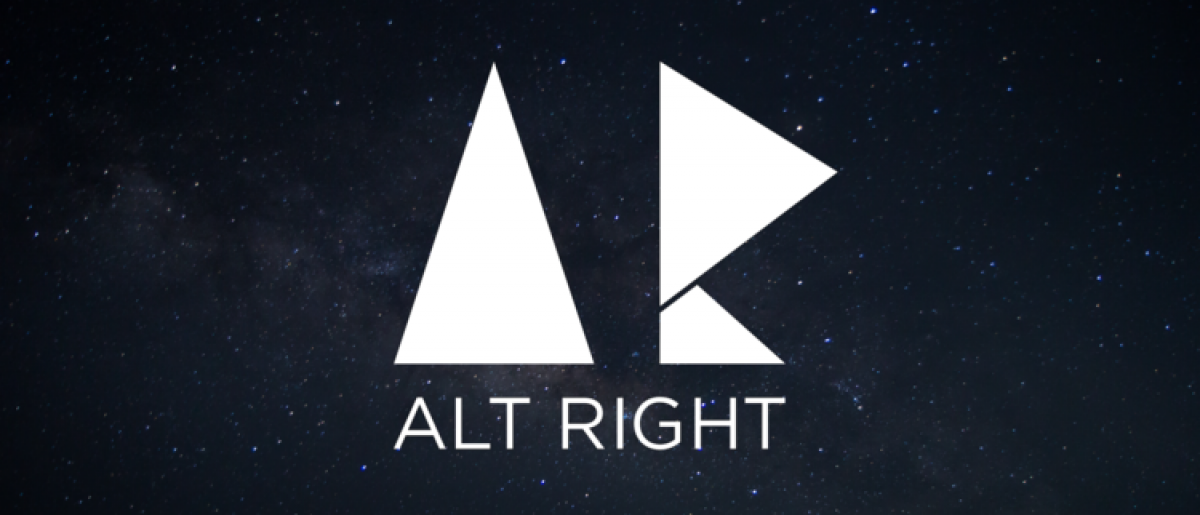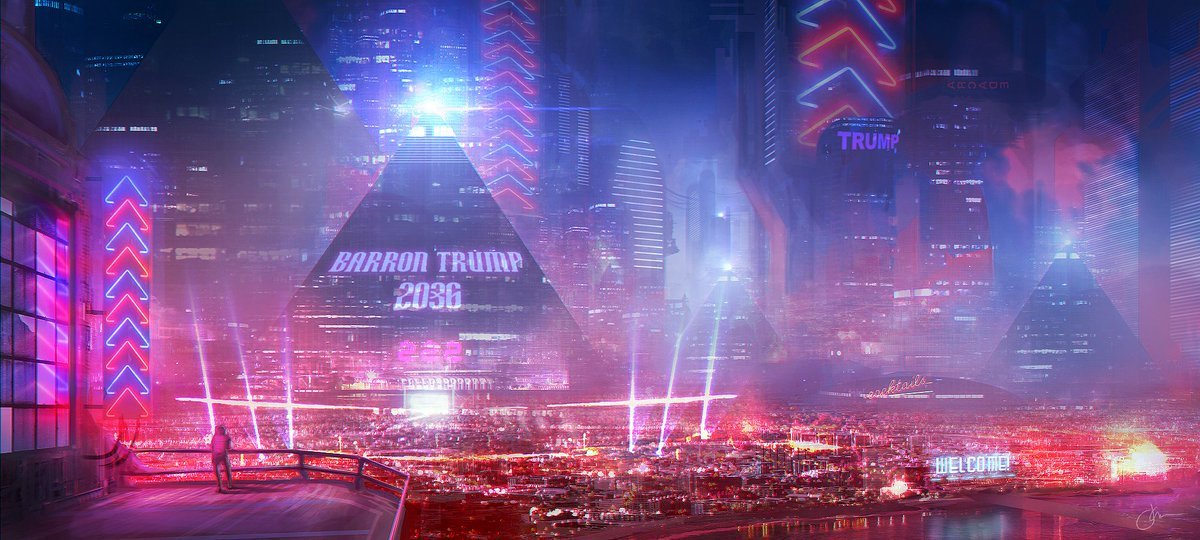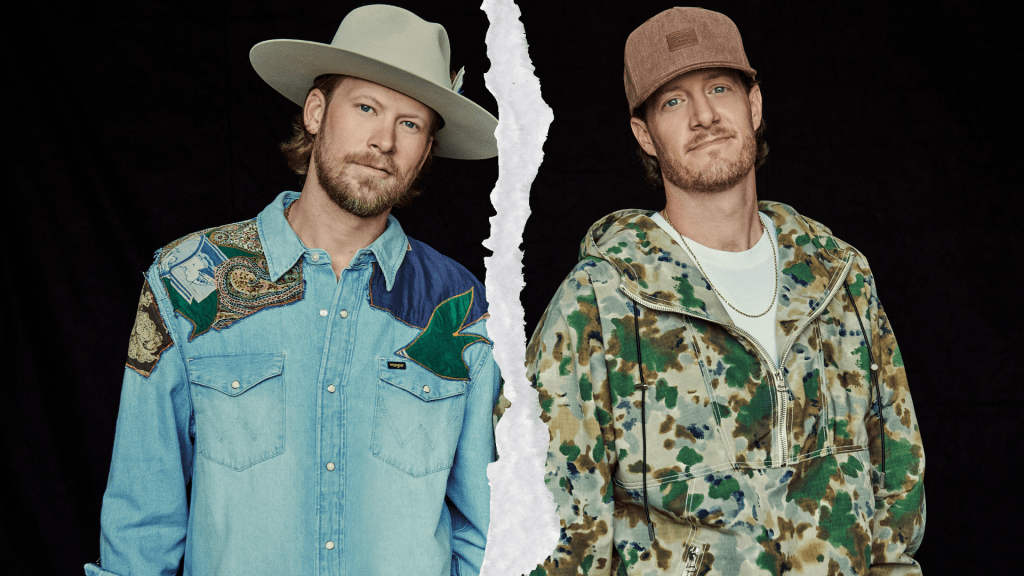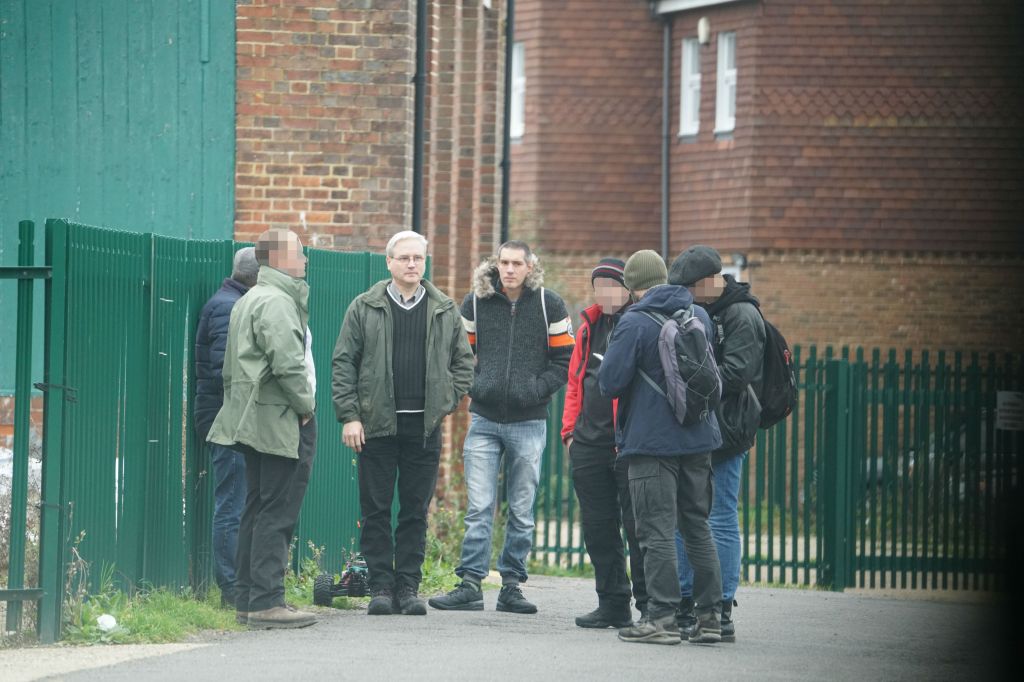Last February, a website called Rave News reported that leading vaporwave producers were gathering in Montreal for an emergency summit to discuss “creeping fascism” in the scene. Vaporwave, an electronic subgenre conceived on the web in the early 2010s, is perhaps best described as post-apocalyptic mall music, with producers like Macintosh Plus and Saint Pepsi (now Skylar Spence) warping muzak, smooth jazz, and dated adult contemporary into airless, warbling soundscapes. It was a progressive-leaning genre that seemed to satirize consumer culture. “I always assumed it was transparent through my work that I leaned left,” vaporwave pioneer Ramona Xavier, the woman behind Macintosh Plus, told THUMP.
But now, according to Rave News, vaporwave was mysteriously attracting fascists.
Videos by VICE
The article’s comments section was quickly swarmed by neo-Nazis eager to defend their interest in vaporwave. “The National Socialists who lived in the time of Hitler were big fans of Richard Wagner,” one wrote. “But in modern times, it is appropriate for us to turn to modern music.” There was just one problem: the report, like everything else on Rave News, was fake news. No anti-fascist meeting of vaporwave artists had actually taken place.
“Our souls are wrapped up in these sounds.”—Andrew Anglin, Daily Stormer founder
The point of The Onion-like satire wasn’t clear. But knowingly or not, Rave News had hit on a real trend. On SoundCloud and Bandcamp, self-identified fascist musicians really have appropriated vaporwave, along with synthwave, a genre that nostalgically recapitulates the soundtracks of early video games like Sonic the Hedgehog and 80s movies like Blade Runner and Halloween. Today’s fascists have stamped synthwave and vaporwave with a swastika and swirled them together to concoct a new electronic music subculture called fashwave (the “fash” stands for “fascism”), and another related microgenre called Trumpwave. The aesthetic of both might be summed up as Triumph of the Will on a Tron grid.
Fashwave is almost entirely instrumental, and wholly unoriginal. If it weren’t for the jarring track titles—”Demographic Decline,” “Team White,” “Death to Traitors,” to cite a few by fashwave artist Xurious—you might not be able to tell the difference between fashwave and the microgenres from which it draws inspiration. Occasionally, though, a track will interrupt its celestial synth atmospherics or arcade-like 8-bit bloops with a sample of Adolf Hitler ranting at a rally, or President Trump’s speeches spliced together to make him boom, “The heroes are those who kill Jews!” The effect is a hammy nightmare—think Jane Fonda leading one of her 80s exercise routines at a Nuremberg rally.
Fashwave has become propaganda for the neo-fascist movement known as the “alt-right,” a term that originated on America’s far-right fringe in the early 2010s. Proponents of the loosely configured movement tend to reject “political correctness,” trade, immigration, Islam, feminism, the left, “globalism,” and establishment conservatism—which are also more or less the targets of Trump and, after his takeover, much of the Republican Party. Like fascism through the decades, the alt-right is shot through with contradictions; many of its followers disavow racism, homophobia, and anti-Semitism. But its underlying motive is still that of the fringe from which it sprang: white ethno-nationalism and authoritarianism.
With Trump’s election and the spread of far-right parties in Europe, the alt-right is on the ascent. Like its Nazi and Italian fascist forerunners, it wants to infiltrate and remake popular culture. And fashwave—with its sonically inoffensive, largely lyric-free instrumentals—is the first fascist music that is easy enough on the ears to have mainstream appeal.
On 4chan’s /pol/, the web’s unofficial alt-right headquarters, posters talk frankly of fashwave as a “trap to make our ideas seem friendly and approachable,” as one user wrote. Another warned that the slogans on fashwave-related art work needed to be softened for wider consumption: “Careful guys, the phrase needs to be oblique and vague, not direct ‘GAS THE KIKES’ /pol/ memes. Try some subtlety.”
“I think it’s great that we have our own culture, even if it’s small.”—alt-right leader Richard Spencer
With its tinny musical quality and tiny scope, however, fashwave is a long way from exuding any real cultural power, and might flame out any day. Until Buzzfeed brought the music into mainstream awareness with an article in December, it was virtually unknown beyond alt-right circles. There are only a handful of major fashwave artists, and they’re not headlining any fascist raves or military parades. Instead, they’re toiling in the internet’s depths, getting a few thousand listens for every track. Leading fashwave producer Cyber Nazi’s two biggest hits, “Right Wing Death Squads” and “Galactic Lebensraum,” cracked 50,000 YouTube views—respectable, but hardly a cultural Reichstag fire.
Still, the alt-right’s gatekeepers have adopted fashwave as the movement’s signature sound. Black Sun Radio, an online neo-Nazi station, is saturated with both fashwave and non-fascist synthwave. Andrew Anglin, founder of leading neo-Nazi site Daily Stormer, last year christened synthwave the “soundtrack of the alt-right,” praising it as “the Whitest music ever [sic]” for its ostensible lack of African rhythmic influence. He posts a recurring feature called “Fashwave Fridays,” which includes a synthwave playlist alongside typical synthwave imagery, like 80s women in bright spandex and retro sports cars. “The music is the spirit of the childhoods of millennials,” Anglin wrote on the Daily Stormer. “Our souls are wrapped up in these sounds.”

The alt-right logo by Richard Spencer.
Over the phone with THUMP, Richard Spencer—president of white nationalist group the National Policy Institute, and widely regarded as the inventor of the term “alt-right”—said he loves fashwave. “Sometimes when I’m doing business, busy-work, I’ll just flip on Xurious or Cyber Nazi on SoundCloud or YouTube and just listen to it,” the white supremacist writer and publisher, who sports a Third Reich-reminiscent “fashy” haircut, said. “I think it’s great that we have our own culture, even if it’s small.” (Spencer recently became a national meme when he was punched in the face by an anarchist while giving an interview to ABC News, footage of which has been set to different popular songs, including “Sandstorm,” and which gave rise to the hashtag #punchanazi.)
Spencer has incorporated fashwave aeshthetics into the alt-right’s branding. In November, at a National Policy Institute conference in Washington where Xurious was a musical guest, Spencer unveiled a logo for the movement. Its geometric “A” and “R,” cast against a starry sky, looked like letters from an alien language, and over the mic, Spencer said the design was inspired by “synthwave nostalgia.”
Fashwave’s visuals, circulated on Twitter and 4chan, are just as essential as its music. Typical vaporwave pop-art—such as Windows 95 logos, Japanese characters, and Greco-Roman statues sprinkled on pastel or neon backgrounds—mingles with Nazi iconography, like Hitler in a Hawaiian shirt. At the same time, the neon-lit cityscapes of synthwave visuals are populated with red-eyed cyborg death squads.

In an email to THUMP, Cyber Nazi proclaimed fashwave to be the “direct heir” of Futurism, the 1910s avant-garde art movement that hitched itself to Italian fascism. The Futurists gloried in technological advances such as trains, automobiles, and electric light, as well as the violence of heavy industry and war. Similarly, “We have the internet and computers,” Cyber Nazi wrote. Viewed a certain way, fashwave does reflect a kind of present-day Futurist project: a global cybernetic subculture geared towards millennials, propagated by memes like Pepe the Frog, and centered on sites like 4chan and the new Twitter alternative, Gab. In synthwave and vaporwave—genres born, like the alt-right, largely on the internet—the movement has found a natural fit.
Meanwhile, fashwave fans have cast aside punk, folk, and metal—music traditions with long histories of being appropriated as vehicles for far-right ideology—as relics. “It’s impossible to build anything with [those] old and expired genres,” Cyber Nazi told THUMP. “We are young people who have nothing to do with the skin heads gangs, hoolingans or kkk masons. [sic]” This disavowal, however, doesn’t mean fashwave represents a friendlier fascism; in an interview on Right Stuff Radio, Cyber Nazi casually mentioned his hatred of “niggers” and “sand-niggers.”
Vaporwave and synthwave aren’t the first electronic music genres to be appropriated by fascists, either. In fact, they’re just the latest iteration in a long history of co-opted machine-made sounds, one with roots in the early 20th century.
“It’s impossible to build anything with old and expired genres”—fashwave producer Cyber Nazi
Back in the 1910s, Futurist thinker Luigi Russolo called for an explosive “art of noises” for the industrial age, and in the 1970s, early industrial and noise musicians consciously rose to the challenge. According to Assimilate: A Critical History of Industrial Music by S. Alexander Reed, pioneers like Spahn Ranch, Nurse with Wound, and Pornotanz aimed to critique society’s invisible totalitarianism by conjuring it as violent noise. However, industrial music’s nihilistic outlook and martial overtones—including its use of fascist symbolism and regalia for shock value—also attracted neo-Nazi fans. An example of what Reed calls industrial’s “often intentional language of ambiguity” can be found in Laibach, a leather-clad Slovenian group whose name refers to the Nazis’ term for their occupation of Slovenia. The group has embodied a vaguely Stalinist aesthetic since the 80s so convincingly that North Korea welcomed them to Pyongyang in 2015.
As industrial music was emerging in the 70s, Kraftwerk was busy in Germany laying the groundwork for electronic pop music. The group always insisted that their artistic vision of a dawning cybernetic age was a continuation of the radical modernism of 1920s Weimar Germany rather than a homage to the Nazi era. But Kraftwerk’s automaton-like presence recalled soldiers marching in lockstep, and the cover of their 1975 album, Radio-Activity, pictured a Nazi radio set called the Volksempfänger. That tension led Genosavior, one of the scene’s artists, to praise Kraftwerk on Twitter as an “Early #FashWave prototype.” One alt-right meme even rechristens them “Fashwerk.”
Spencer, for his part, says his favorite bands are Depeche Mode and New Order—two groups that are practically synonymous with the 80s, the decade in which the alt-right bigwig grew up. But unlike most other fans, he sees a fascist sheen on the icy synth plains of the New Wave music they pioneered. Upon surface inspection, you can see where he might have gotten the idea. According to a biography of the band, New Order traced its name to a stray phrase from the Situationists, a postwar French art collective of anti-authoritarian Marxists. But “New Order” was also Hitler’s term for his program of world domination. The band’s earlier iteration, Joy Division, borrowed its name from brothels in the concentration camps, in addition to putting a drawing of a Hitler Youth drummer on the cover of its 1978 debut EP, An Ideal for Living. To the band’s dismay, plenty of skinheads misunderstood where the band was coming from, and showed up at Joy Division’s concerts.
Over the phone with THUMP, Spencer said he thought New Order and the New Wave bands that took after them “were consciously or unconsciously channeling… something darker, more serious, maybe more authoritarian.”
At least with New Order, he’s right, although it’s complicated. On the one hand, the band was critiquing fascism as a growing menace in a late-70s Britain where imperial decline and industrial decay had radicalized a stagnated white working-class (sound familiar?). On the other hand, as Simon Reynolds recounts in his 2006 history Rip It Up and Start Again: Postpunk 1978-1984, singer Bernard Sumner “enthused about the beauty (the art, architecture, design, even uniforms) that emerged despite ‘all that hate and all that dominance.’” Fellow member Peter Hook, writes Reynolds, admitted to the dark allure of flirting with fascist aesthetics. “We thought it was a very, very strong feeling,” Hook said.
That guilty fascist charge, so acutely felt by New Order in the 70s and 80s, now flows shamelessly through the alt-right, finding full expression in fashwave.
“By connecting an easily digestible message to the soundtrack of our youth, the alt-right seeks to subvert our critical thinking and directly appeal to our emotional selves.”—Stefanie Franciotti AKA Sleep ∞ Over
But fashwave taps into still another lineage in the history of modern music—that of vaporwave’s raw material, muzak, which in turn is haunted by the specter of fascism.
In September 1934, the National Fascist Militia Band, an Italian brass band created by Benito Mussolini, entered the New York studios of the newly formed Muzak corporation and recorded one of the first-ever sessions of muzak. There were 25 songs in the set, including an Italian ditty called “March on Rome (Anthem for a Young Fascist)” and America’s own “The Star-Spangled Banner.” The Muzak corporation piped the National Fascist Militia Band’s tunes into hotel lobbies, restaurants, and homes under a sanitized alias: “The Pan-American Brass Band.”
The Muzak corporation wasn’t a fascist outfit itself, but its use of canned easy-listening music to spur on shoppers and workers had stark martial origins. Its founder, Major General George Owen Squier, was America’s chief signal officer during World War I, responsible for the military’s communications network. The company’s patented “stimulus progression”—playlists calibrated to maintain workers’ energy levels and morale through the day—first came into wide commercial use during WWII in armaments factories. According to Elevator Music: A Surreal History, by its heyday in the 1960s and 70s, muzak was everywhere: trickling out of megaphones at a Nixon inauguration, calming cattle in slaughterhouses and astronauts on their way to the moon, keeping missile operators awake and alert in underground nuclear silos. As if winking at the critics who called muzak (a portmanteau of Kodak and music) an instrument of societal control, the Muzak corporation branded itself a “System of Security for the ’70s,” as well as “The Total Communications System.”

A neon cityscape example of fashwave art.
By 2009, following the economic crash, the Muzak corporation went bankrupt. (It was eventually bought out, renamed, and revived, and now creates customized playlists of pre-existing songs for store branding.) Around the same time, left-leaning experimental electronic artists like Daniel Lopatin, James Ferraro, and Ramona Xavier began plumbing all the bland sonic ambience of capitalism, including muzak and largely forgotten pop and smooth jazz numbers, resulting in what would later be known as vaporwave.
Lopatin, best known for his work as Oneohtrix Point Never, looped and slowed down bits of old pop songs for a 2009 compilation called Eccojams Vol. 1, released under the alias Chuck Person. Ramona Xavier’s 2011 album Floral Shoppe distorted 80s pop and old smooth jazz, and her retro net-art aesthetic, presented as kitsch, has a become canonical vaporwave signifier, extended and reinterpreted by later acts like 2 8 1 4 and Death’s Dynamic Shroud.wmv. James Ferraro’s Far Side Virtual, released the same year, assembled cheap MIDI presets, the Skype login sound, and other bits of pointedly contemporary digital detritus into a gratingly cheery faux-muzak orchestra. While the project’s absurdly gleeful tone leaves it unclear whether Ferraro’s vision of life in the digital age is utopian, dystopian, or neither, that ambiguity and perhaps ambivalence has persisted in the music of the vaporwave scene he helped inspire.
In a 2011 essay that helped define the genre, Adam Harper asked: “Is [vaporwave] a critique of capitalism or a capitulation to it?” “Both and neither,” he continued. “These musicians can be read as sarcastic anti-capitalists revealing the lies and slippages of modern techno-culture and its representations, or as its willing facilitators, shivering with delight upon each new wave of delicious sound.”
The development of vaporwave ran parallel to that of synthwave, which emerged in the mid-2000s, rebooting the synthy 80s film scores by composers like John Carpenter, Vangelis, and Tangerine Dream. Within the past two years, the semi-ironic nostalgia of synthwave and vaporwave has outgrown its subcultural roots and seeped into the mainstream—a process exemplified by MTV’s use of vaporwave in branding, and the popularity of the soundtrack to hit Neflix series Stranger Things, by Austin synthwave group S U R V I V E.
At the same time, fascists have flipped this retromania around, collapsing the ironic distance into a vortex of nostalgia for the worst elements of the Reagan era. According to Spencer, the alt-right’s fascination with the 80s stems from looking back on the decade “as halcyon days, as the last days of white America.” Fashwave, then, directly links pop culture’s generalized 80s nostalgia to the alt-right’s racist ideology. The “one connecting factor” of white nationalism, an alt-rightist declared on Twitter, is “a belief in the supremacy of the 1980s. This is the goal.”
A vaporwave video by satirical artist Mike Diva
Stefanie Franciotti, who records under the alias Sleep ∞ Over, emerged from the same Austin-based, synthesizer-centric scene as S U R V I V E. She is decidedly anti-fascist, and described fashwave to THUMP as “weaponized nostalgia.
“By connecting an easily digestible message to the soundtrack of our youth,” she said, “the alt-right seeks to subvert our critical thinking and directly appeal to our emotional selves.”
Today, arguably, the 80s are back, but with a few modifications. The Reagan rictus smile has slumped into a scowl, and the Shining City on a Hill is to be ringed by a great wall. At the center of it all is Trump, a living time-capsule of 80s capitalist excess and garishness, and thus the ideal subject for fashwave. In “Trumpwave,” a track by the synthwave artist iamMANOLIS is annexed to play over footage of a younger Trump wrestling at WWE, hitting on women, and eating stuffed-crust for a Pizza Hut commercial. Below the video, a YouTube commenter wrote: “When you see all these older videos it all makes sense. It’s not that Trump is weird and we’re going towards some parody of a society, it’s that we already live in a parody. Trump is bringing back the sanity of the good old days.” Another wrote simply: “The Donald is here. I feel the capitalism! <3 “
“Trumpwave” is an exemplar of the genre by the same name. Trumpwave shares an alt-right audience and at least one producer—Cyber Nazi—with fashwave. But the fashwave off-shoot is distinct in appropriating mainly vaporwave, and in its emphasis, through both sampled audio and video clips, on The Donald himself. In Trumpwave, he is recast as the modern-day inheritor of the mythologized 80s, a decade that is taken to stand for racial purity and unleashed capitalism. “Ivanka Vaporwave,” a production by an alt-right YouTube channel, slows down the Cosmat Angels’ 1985 “I’m Falling” over old clips of Trump’s daughter Ivanka modeling as a young teenager. Cyber Nazi’s “Take Back Our Future” rolls light muzak over stock footage of early 90s New York on a sunny day and Trump awkwardly dancing on Saturday Night Live.
Trumpwave exploits a vulnerability in vaporwave: its ambivalence about the cultural detritus that inspired it. This careful tension between irony and earnestness was part of what made vaporwave fun—it flirted with the implicit transgressiveness of appreciating its aggressively commercial source material. But that ambiguity left the aesthetic distressingly easy for the alt-right to appropriate by stripping it of irony and playfulness—by taking it literally, as a glorification of capitalism. Similarly, when synthwave artists exhumed 80s movies like Blade Runner, Robocop, and Terminator, they also dressed the music in the decade’s fatalist retrofuturism. A glance at the album art of Cyber Nazi—with its jackbooted cyborg cops going door to door—shows how for fascists, this dystopia is utopia. Extrapolating from the 80s, fashwave embraces that decade’s grim sci-fi forecasts as paradise.
There’s nothing inherently fascist about any sound—everything is context. But the deployment of vaporwave and synthwave by the alt-right proves that fascism has survived the defeat of the Axis, incubating its own culture even as it lost all political power. New Order, Kraftwerk, and many others traced an enduring fascination with fascist aesthetics. Meanwhile, neo-Nazi subcultures thrived in the shadows of genres like industrial, punk, metal, and trance. Fashwave is just the most recent in a long line of fascist appropriations, stretching beyond music: the Nazi swastika is, of course, a literal inversion of a Buddhist symbol. But unlike other genres, fashwave arrives at a time when fascism itself is surging to global power for the first time since the 30s, and both its music and visuals can seem like a premonition of the future. Refracting a nostalgia for the 80s and a love of capitalism through the prism of Trump, fashave projects an image of a looming dystopia, one that grows a little more plausible by the day.




